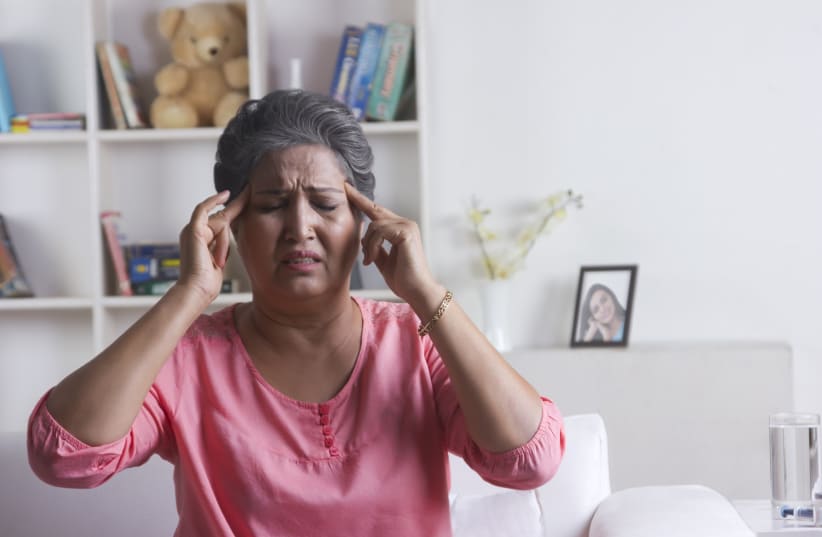When it comes to the change of seasons, we usually hear about allergies, dryness and viruses. However, some people suffer from the strongest headache to affect humans, a cluster headache, during transition seasons. These headaches really hurt and have very clear identifiable characteristics.
The first is that the cluster pain reaches maximum intensity within a few minutes, and the sufferer doesn’t have time to prepare and take anti-pain medication. It’s accompanied by symptoms of unilateral activation of the autonomic nervous system. It’s connected to the biological clock, which is expressed in the appearance of pain in close connection with the months of the transition seasons. And, it usually affects men.
In addition, the cluster pain will appear on only one side of the head, and always on the same side. In contrast, migraine pain appears once on the right and once on the left, but cluster pain always appears on the same side. It’s less common for the pain to radiate to the back of the head and reach the nape of the neck on the same side.
The intensity of the pain is terrible, and sufferers of this pain describe a feeling of something trying to push the eye out, or as if a knife is stuck inside the eye so it’s not surprising to hear its sufferers screaming in pain, and some even bang their head against the wall to relieve the pain.
Accompanying symptoms to the pain
With the onset of pain, the eye will start to tear and redden (the whiteness of the eye appears inflamed), the eye becomes smaller and the nostril, only on the same side of the pain, begins to leak or become full. Sometimes there’s a difference in beads of perspiration between the two sides of the face, with less sweating on the pain side. These are symptoms of a disorder in the functioning of the autonomic nervous system, which includes functions to control heart rate, respiration rate, sweating, bowel function, blood pressure and more.
Why do clusters happen?
The cluster pain is probably related to a disturbance in the internal biological clock.
Like clockwork, it tends to appear mainly in the transition seasons and especially in the fall. When the biological clock announces “fall is coming,” the headache also begins. From this moment, the person can suffer from one to eight pain attacks a day, with each pain attack lasting from 30 minutes to three hours and on average about an hour. The pain also tends to appear at certain hours, and can usually wake the person between midnight and 2 a.m.
Such periods of pain, with such daily pain attacks, lasts an average of four weeks and after that the pain will disappear until the biological clock restarts the following year or after a few years. The timing of the headaches led to the term cluster.
Studies show that it’s probably a disorder that originates in the hypothalamus, a small structure measuring one centimeter, located at the base of the brain where the biological clock is located. The nature of the disorder is still unknown and other factors teach that it’s a more complex disorder.There are people in whom the cluster pain appears chronically.
A chronic condition is defined as that less than three months will pass between the cluster period or the duration of each cluster of pain will be very long. During the period of pain the person suffers greatly. Although the attack lasts about an hour and passes, it leaves the person exhausted and scared of what happened. Also, people can’t function when they’re in deep pain. Some people have lost consciousness during a pain attack.
So, it’s important to know that there are effective treatments.
Treatment methods
Treatment is done on two levels: In the immediate level, treatment is given to stop the pain attack. This is done by inhaling clean oxygen as soon as pain starts or by taking medications or injections. At the preventive level, medication is given to stop the entire pain cycle such as steroids taken for two to four weeks, or other medications where the goal is complete pain control.
In someone who has a high frequency of pain or chronic pain, prolonged and regular treatment is given. Here, too, the goal is prevention.
In recent years, several new treatments have been introduced, such as CGRP (anti-peptide), cannabis, and those who are resistant to all these methods can have a hypothalamic electrode transplant.
A study on the treatment of psilocybin fungus for the prevention of cluster pain and a biological study to identify the cause that activates the biological clock that creates the pain is currently being conducted.
Dr. Amnon Musak is the Deputy Director of the Department of Neurology, Clinic for the Treatment of Head and Neck Pain at Tel Aviv Sourasky Medical Center.
